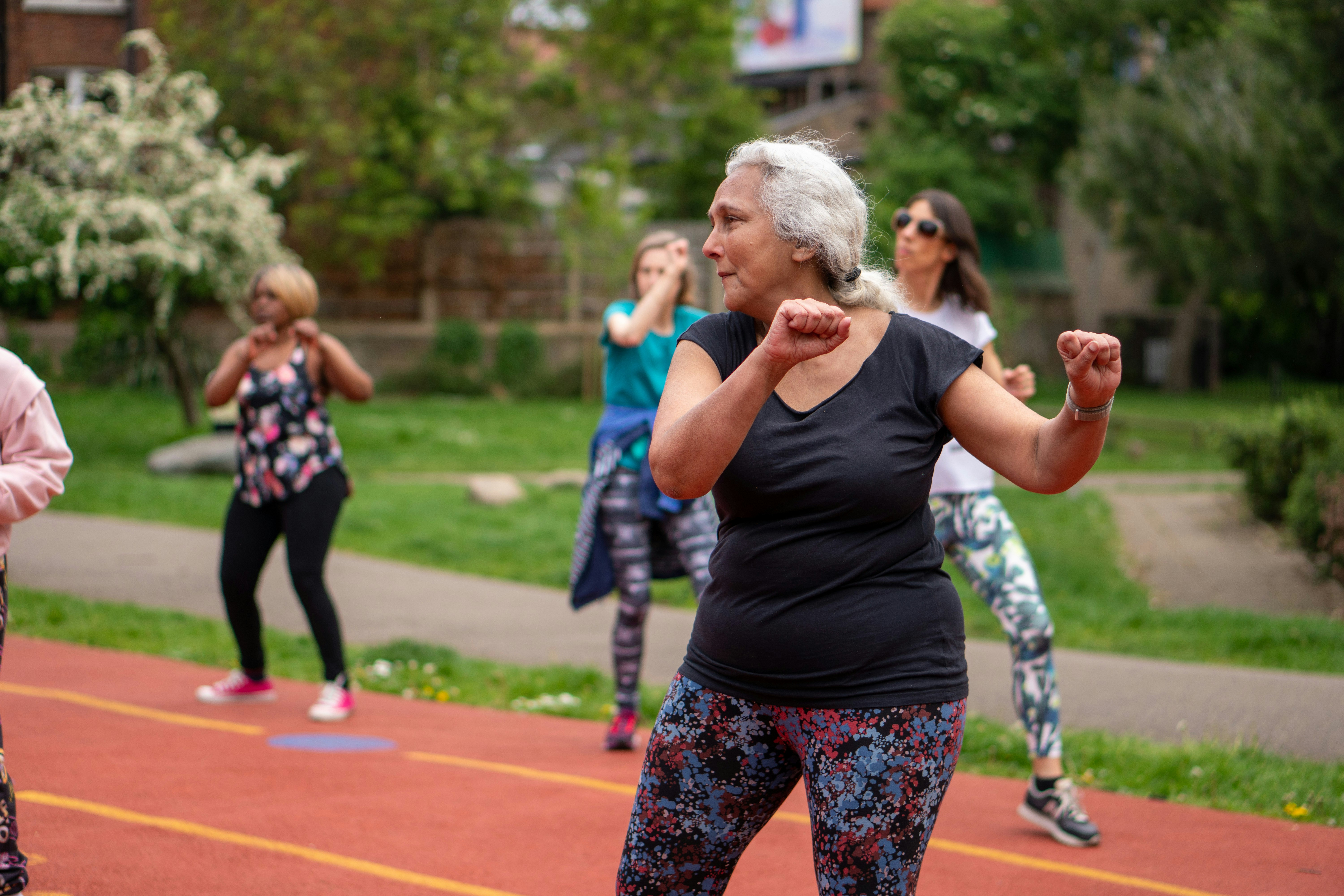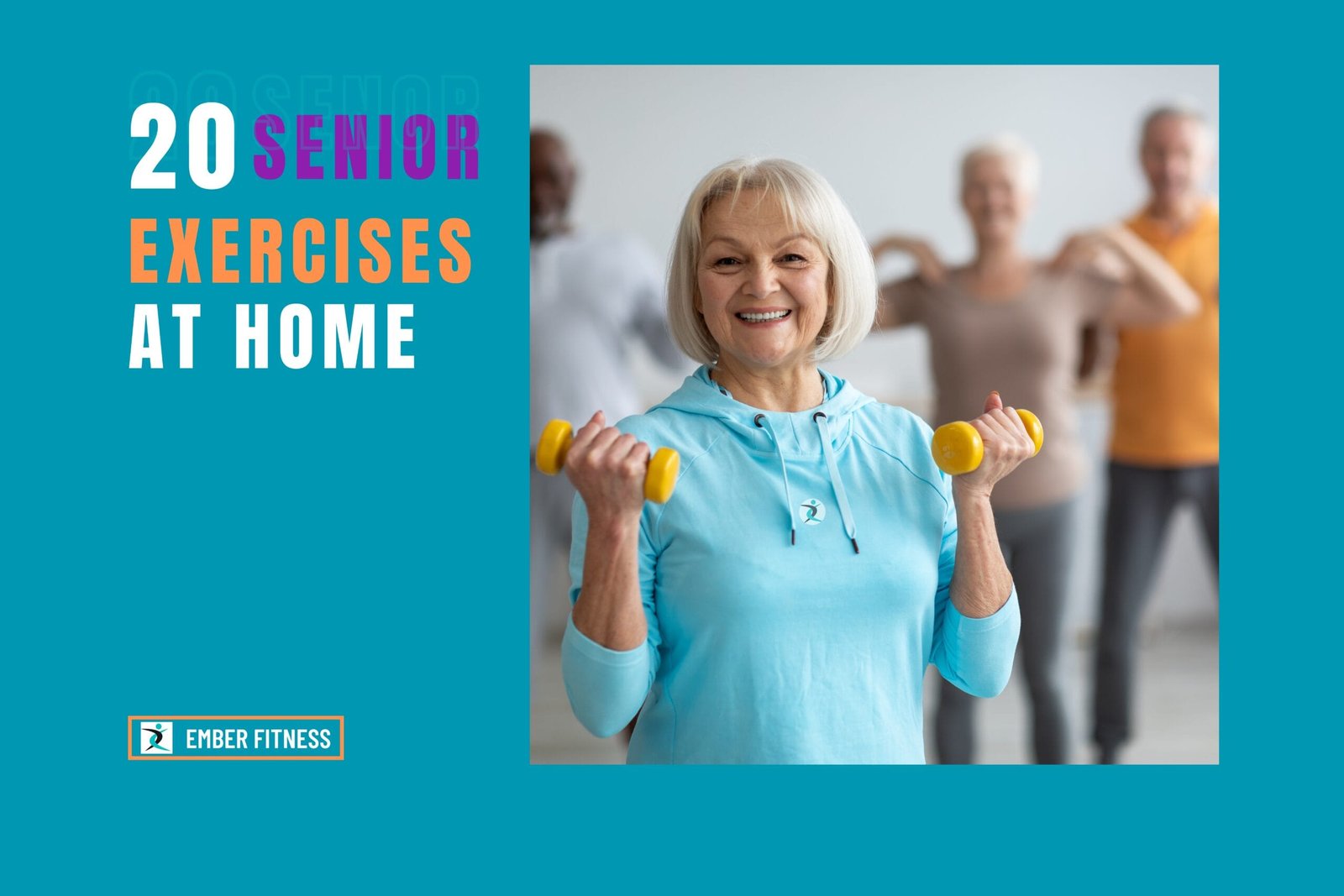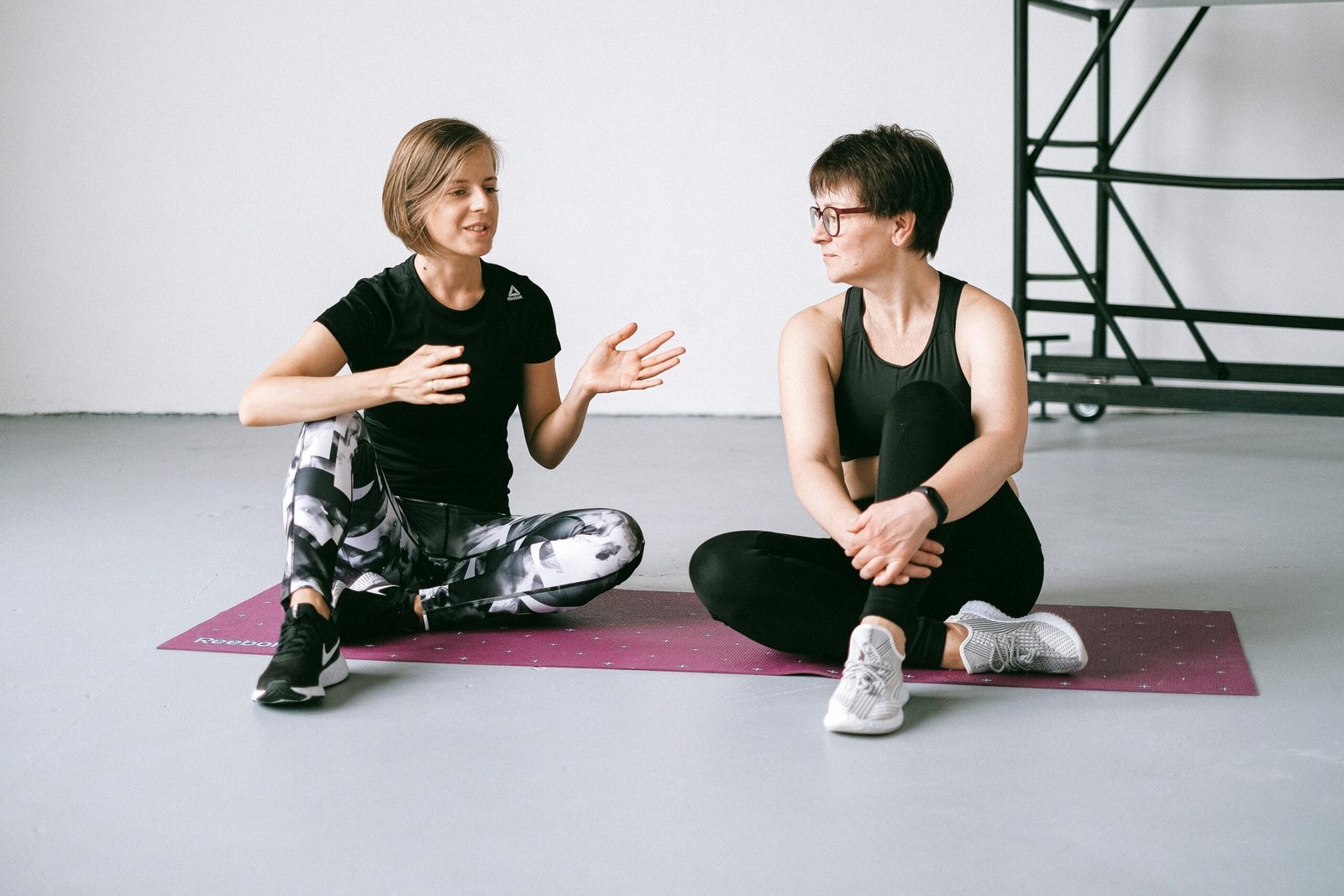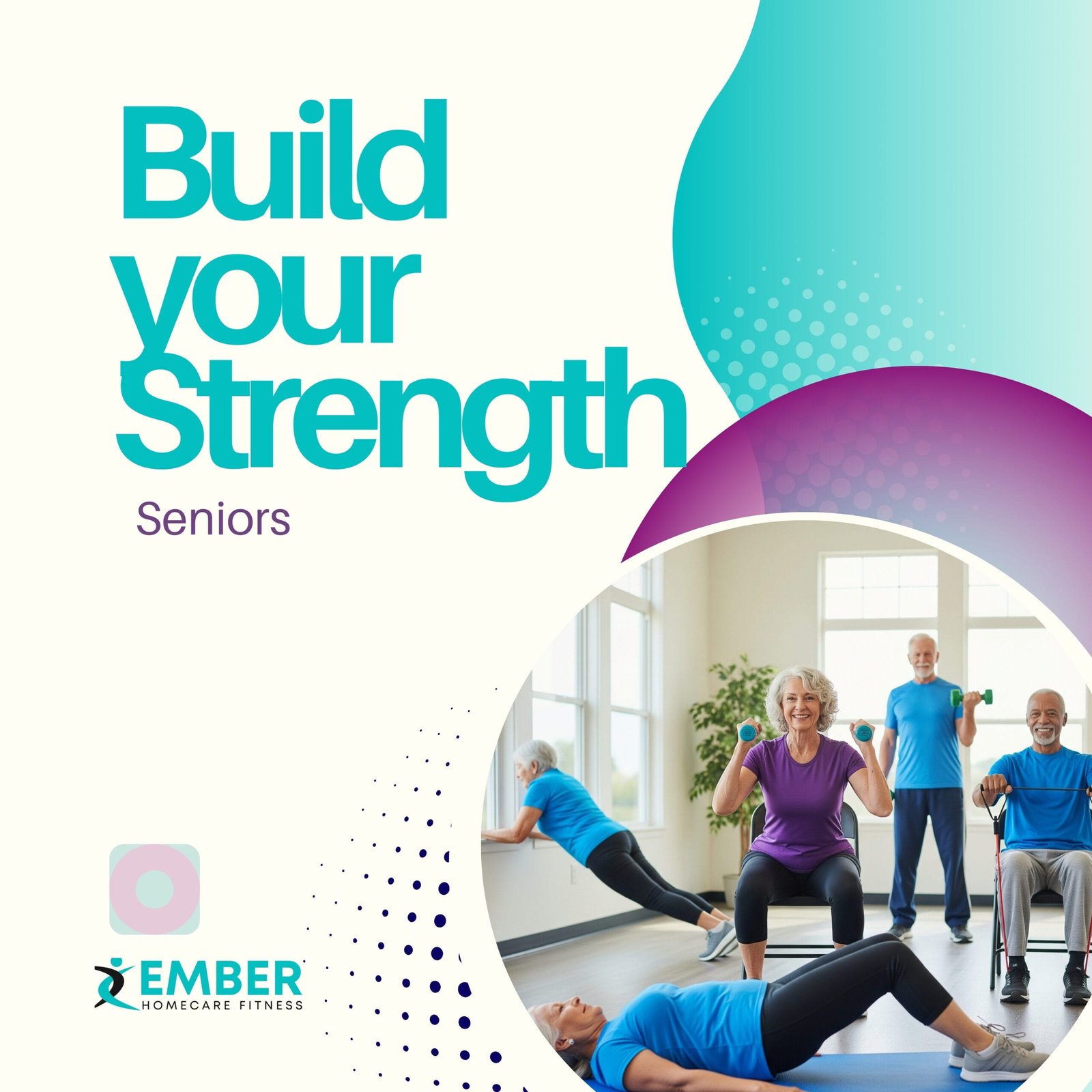
Introduction
As women transition into their 50s and beyond, the significance of maintaining physical fitness and overall health becomes increasingly apparent. Often, misconceptions surround the idea of exercising at this stage in life, with some believing that engaging in physical activity may be too strenuous or even unsafe. However, research consistently demonstrates that at-home workouts can provide numerous benefits, particularly for women in this age group. By incorporating regular exercise into their daily routines, women over 50 can enhance their physical strength, improve flexibility, and promote mental well-being.
At-home workouts offer an accessible and convenient option, allowing women to engage in fitness without the need for expensive gym memberships or rigid class schedules. This flexibility is particularly appealing for those managing various responsibilities, whether related to work, family, or other commitments. Additionally, the psychological benefits of engaging in physical activity cannot be understated. Regular exercise has been shown to alleviate symptoms of anxiety and depression, improve self-esteem, and increase overall life satisfaction.
Moreover, staying active at home empowers women to take control of their health in a way that is tailored to their own capabilities and lifestyle. From low-impact workouts such as yoga and Pilates to strength training using resistance bands or body weight exercises, the variety of options ensures that every woman can find an approach that resonates with her personal preferences. Emphasizing the importance of consistency, even small increments of activity can contribute significantly to achieving lasting health improvements and enhanced well-being.
Through this guide, we aim to motivate and encourage women over 50 to embrace the concept of at-home workouts, fostering a culture of health and wellness that serves not only to strengthen the body but also uplifts the spirit. Adopting a proactive approach to fitness can truly transform one’s quality of life as they continue their journey through the decades ahead.
Understanding Your Fitness Needs After 50
As women age, particularly after reaching the age of 50, their bodies undergo various changes that can significantly influence fitness requirements and workout routines. One of the most notable changes is a decline in metabolic rate. With the slowing metabolism, women may find it easier to gain weight, necessitating a more structured approach to both diet and exercise. Incorporating strength training and aerobic exercises into their routines can help boost metabolic rates, leading to improved energy levels and weight management.
Hormonal fluctuations, especially during the menopausal transition, can also impact fitness needs. Many women experience decreased estrogen levels, which can affect bone density and muscle mass. This makes it essential to focus on exercises that promote bone health, such as weight-bearing activities and resistance training. By understanding the relationship between hormones and fitness, women can tailor their workout plans to not only maintain muscle mass but also to enhance overall health.
In addition to metabolic and hormonal changes, physical limitations often arise with age. Conditions such as arthritis or osteoporosis may limit mobility and affect joint health. Recognizing these limitations is crucial for selecting appropriate exercises. Low-impact workouts such as swimming, yoga, or cycling can provide effective cardiovascular benefits without straining joints. Moreover, flexibility and balance exercises are essential to prevent falls and injuries, adding another layer to fitness routines that cater specifically to the unique needs of women over 50.
By acknowledging these key factors—metabolic changes, hormonal fluctuations, and physical limitations—women can develop an effective and safe fitness routine that promotes longevity and enhances overall well-being. It is important to consult health professionals or fitness experts to create personalized workout plans that align with individual health goals and conditions.
Benefits of At-Home Workouts
At-home workouts offer numerous advantages, particularly for women over 50 who may seek to maintain their fitness levels without the constraints often associated with gym memberships or group classes. One of the most significant benefits is the convenience of exercising in a familiar environment. No longer do individuals need to spend time commuting to a gym; instead, workouts can take place in the comfort of their own homes, fitting seamlessly into their daily routines.
Cost-effectiveness is another compelling reason to consider at-home workouts. Traditional gym memberships can be expensive and may include costs for classes and personal training sessions. In contrast, at-home workouts require minimal investment, as many resources—such as online videos and fitness apps—are often available for free or at a low cost. This accessibility allows individuals to prioritize their health without the financial burden often associated with conventional exercise settings.
Additionally, at-home workouts provide the flexibility to work out at one’s own pace. This is particularly beneficial for those who may be new to exercise or have specific limitations that require a gradual approach. The ability to schedule workouts when it is most convenient enables individuals to better adhere to their fitness plans. At-home routines can also be easily modified to match personal preferences; this encompasses everything from the types of exercises performed to the intensity level. Women over 50 can tailor their workouts to focus on strength training, flexibility, or cardiovascular health, ensuring a comprehensive approach to fitness that aligns with their goals.
Ultimately, by choosing at-home workouts, women in this demographic can enhance their overall well-being while enjoying the freedom and flexibility that come with exercising in their chosen environment.
Types of At-Home Workouts for Women Over 50
As women age, maintaining a regular exercise routine becomes increasingly important for overall health and well-being. At-home workouts offer a convenient solution, allowing women over 50 to engage in physical activity without the need for a gym. Various types of workouts cater specifically to the unique fitness needs of this demographic, including strength training, yoga, Pilates, low-impact cardio, and flexibility exercises.
Strength training is essential for preserving muscle mass and bone density, which tends to decline with age. Resistance exercises can be performed using body weight, resistance bands, or light weights, and can help enhance overall strength, balance, and metabolism. Simple exercises, such as squats, lunges, and modified push-ups, can effectively build strength while minimizing the risk of injury.
Yoga provides a holistic approach to fitness that benefits both the body and mind. It improves flexibility, promotes relaxation, and enhances balance—all critical components for women over 50. Gentle yoga classes can be tailored to suit various fitness levels, focusing on deep breathing and mindfulness techniques, which can contribute to stress reduction and improved mental clarity.
Pilates is another excellent option that emphasizes core strength, stability, and posture. It comprises controlled movements that can be adapted to different fitness levels, making it accessible for women just beginning their fitness journey. Pilates also enhances body awareness and coordination, which is beneficial for daily activities.
Low-impact cardio exercises—such as walking, cycling, or dancing—keep the heart healthy while minimizing strain on the joints. These activities can be performed in short intervals throughout the day or in longer sessions as endurance improves. Finally, flexibility exercises, including gentle stretching routines, are vital for maintaining joint health and reducing the risk of injury, ensuring a well-rounded fitness regimen.
Creating a Safe and Effective Workout Space
Establishing a dedicated workout space at home is an essential step for women over 50 who wish to maintain a consistent exercise routine. The first consideration should be safety; the area selected for workouts should be free from clutter and hazards that may lead to accidents or injuries. A clear, open space with enough room to move freely without obstruction is crucial. Ideally, the workout area should be located on a flat surface to ensure stability during exercises.
Essential equipment for effective home workouts may include resistance bands, light dumbbells, a yoga mat, and stability balls. These items are not only accessible but also versatile, allowing for a range of exercises targeting strength, flexibility, and balance. It is advisable to choose equipment that aligns with personal fitness levels and goals, making gradual adjustments as confidence and strength develop. Women over 50 should engage in resistance training and balance exercises as these are particularly beneficial for maintaining bone density and overall fitness.
Another important aspect of creating an inviting workout environment is adequate lighting. A well-lit area can improve mood and motivation, encouraging adherence to fitness routines. Natural light is especially beneficial, so positioning the workout space near windows is advantageous. Additionally, consider incorporating personal touches such as motivational quotes or calming colors, which can foster an inspiring ambiance. Regularly changing the layout or décor of the workout area can also reignite enthusiasm for exercising.
Lastly, ensure the environment accommodates for listening to music or guided workout sessions. A sound system or portable speakers can enhance the overall experience. By curating a safe and encouraging workout space, women over 50 can more easily integrate fitness into their daily lives, promoting both physical health and emotional well-being.
Sample At-Home Workout Plan for Women Over 50
Engaging in regular physical activity is crucial, particularly for women over 50, as it promotes overall health and vitality. A well-structured at-home workout plan can be both effective and accommodating to different fitness levels. Below is a sample week-long workout plan designed specifically for women in this age group, including a variety of exercises, rest days, and modifications for accessibility.
Day 1: Strength Training
Start with a warm-up for 5-10 minutes, such as brisk walking or gentle dancing. Follow this with strength exercises focusing on major muscle groups. Recommended exercises include seated leg lifts, wall push-ups, and seated dumbbell presses. Aim for two sets of 10-12 repetitions for each exercise, adjusting weights and repetitions as needed.
Day 2: Cardio
Prioritize aerobic fitness by engaging in low-impact cardio. Consider 20-30 minutes of walking, cycling, or swimming. For added motivation, choose a scenic route or listen to music or podcasts while exercising.
Day 3: Flexibility and Balance
This day focuses on enhancing flexibility and balance. Incorporate gentle stretching and yoga poses like the cat-cow or child’s pose. Balance exercises such as standing on one leg or heel-to-toe walks can also be beneficial.
Day 4: Rest Day
Rest is essential for recovery. Use this day to engage in low-intensity activities like leisurely walking or simply enjoying nature. Ensure proper hydration and nutrition to support your fitness journey.
Day 5: Circuit Training
Create a circuit of three rounds including modified jumping jacks, squats, and planks. Perform each exercise for 30 seconds, followed by a 30-second rest. Circuit training improves cardiovascular endurance and strength.
Day 6: Active Recovery
Incorporate light movement, such as gentle stretching or a restorative yoga session, to promote relaxation and flexibility without overexertion.
Day 7: Functional Fitness
Focus on exercises mimicking daily activities, including chair stands, side leg raises, and toe raises, to enhance everyday mobility and stability. Aim for two sets of 10-15 repetitions.
This week-long workout plan motivates women over 50 to engage in fitness tailored to their needs. Staying active not only nurtures physical health but also boosts mental well-being, fostering a vibrant lifestyle.
Incorporating Nutrition for Optimal Results
The significance of nutrition in enhancing the results of any fitness regimen cannot be overstated, especially for women over 50. As the body undergoes various changes during this life stage, a well-structured nutritional plan becomes crucial in supporting overall health, weight management, and workout effectiveness. Proper nutrition can amplify the benefits of at-home workouts and contribute to long-term wellness goals.
To start, it is important to focus on balanced nutrition that includes a variety of food groups. A diet rich in lean proteins, healthy fats, whole grains, fruits, and vegetables provides the essential nutrients the body requires. Lean proteins, such as chicken, fish, legumes, and low-fat dairy, play a vital role in muscle repair and recovery after exercise. Meanwhile, healthy fats found in nuts, avocados, and olive oil can support heart health and energy levels, which are particularly important as women age.
Hydration is another critical aspect of nutrition to consider. Adequate water intake not only helps maintain energy levels during workouts but also aids in digestion and nutrient absorption. Women over 50 may need to pay special attention to their hydration habits, as the sensation of thirst can diminish with age. It is advisable to drink water regularly throughout the day, and to consider incorporating hydrating foods, such as cucumbers and watermelon, into meals.
Meal planning can also contribute significantly to achieving nutritional goals. Preparing meals ahead of time ensures that healthier choices are readily available, reducing the temptation of processed options. By including a variety of nutrient-dense foods in their meal plans, women can ensure they receive the vitamins and minerals necessary for improved workout results and sustained energy levels.
Staying Motivated and Overcoming Challenges
Maintaining motivation while exercising at home can prove to be a challenging endeavor, particularly for women over 50. This demographic may encounter unique obstacles, including fluctuating energy levels, busy schedules, and the psychological barriers associated with age. However, implementing several strategies can empower these individuals to stay committed to their fitness regimens.
One effective approach is establishing clear and realistic goals. Setting attainable objectives can create a sense of achievement, which is crucial for sustaining motivation. For instance, rather than striving for weight loss, a woman might aim to enhance her flexibility or endurance. These specific aims foster a more positive relationship with exercise, focusing on personal growth rather than merely physical appearance.
In addition to goal-setting, developing a structured routine can significantly enhance consistency. Women over 50 should consider carving out specific times in their weekly schedules dedicated solely to workouts. This level of commitment can help in transforming exercise from an optional activity into a non-negotiable part of life. Incorporating short, enjoyable sessions that align with personal preferences can also reignite enthusiasm, making the workouts more appealing rather than a chore.
Social support can also be vital in staying motivated. Connecting with friends or family members, whether in person or virtually, can create a supportive environment. Group workouts or online fitness communities are excellent avenues for fostering camaraderie and accountability. Sharing experiences and progress with others can cultivate a sense of belonging, inspiring members to push through difficult days.
Lastly, recognizing and addressing potential challenges upfront can help in mitigating their impact. Common hurdles like fatigue or lack of equipment can be managed by incorporating rest days or utilizing household items as workout tools. By approaching exercise with creativity and an open mind, women can overcome obstacles and maintain their commitment to an active lifestyle.
Conclusion: Embracing Fitness and Wellness for Life
In reviewing the numerous benefits of at-home workouts specifically tailored for women over 50, it becomes evident that adopting a fitness regimen is not only feasible but also essential for maintaining health and vitality. Engaging in regular exercise can significantly enhance physical strength, improve flexibility, and provide mental clarity. It is crucial for individuals within this age group to recognize that beginning an exercise program later in life can yield substantial benefits, promoting a sense of well-being and improved quality of life.
The journey to fitness may present challenges, but it also offers immense rewards. Women over 50 are encouraged to embrace this opportunity, creating a personalized workout routine that fits their lifestyles and preferences. Utilizing available resources, such as online classes or community groups, fosters a supportive environment that can motivate and inspire perseverance. Finding an exercise partner or a local workout group can also help in maintaining accountability and enhancing enjoyment through shared experiences.
Furthermore, the holistic approach to wellness encompasses not only physical activity but also balanced nutrition and mental health. Practicing yoga, meditation, or mindfulness can complement physical workouts by fostering a well-rounded lifestyle. This integrated strategy can aid in tackling common challenges such as stress and anxiety, which may become more pronounced as one ages.
Ultimately, it is important to remain open to change and to prioritize health at every stage of life. By embracing fitness as a lifelong pursuit, women over 50 can not only promise themselves better health at present but also pave the way towards a fulfilling and vibrant future. It is indeed never too late to start a fitness journey at home, and support is readily available within community networks ready to uplift and empower those embarking on this transformative path.





